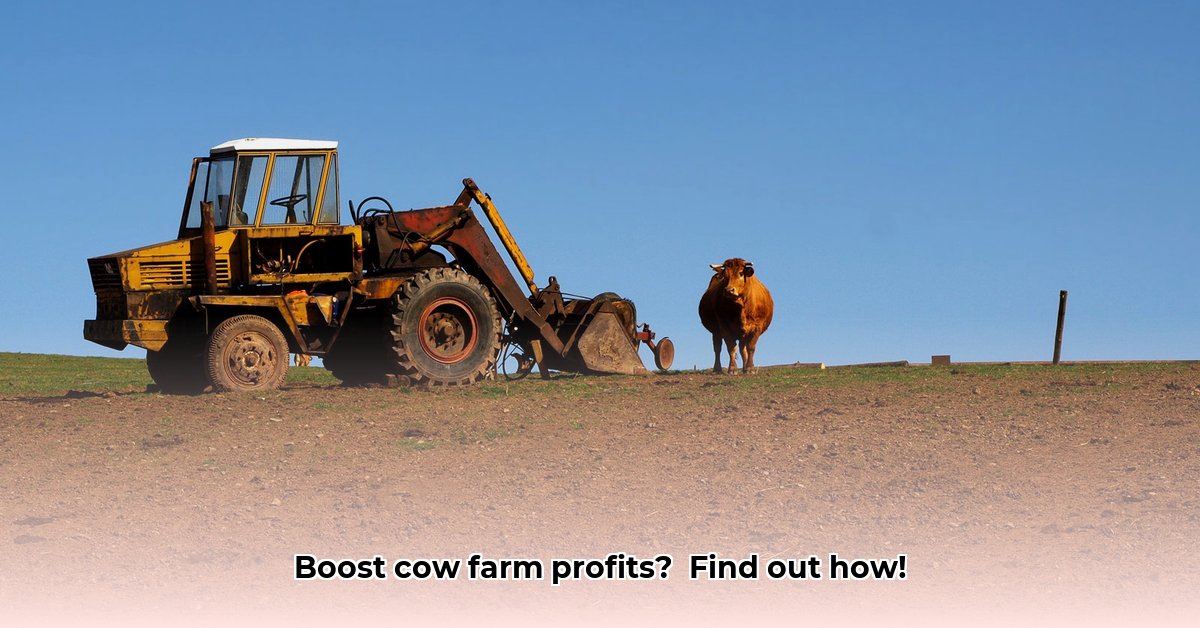
Cow Farming and Tractor Supply: A Partnership for Sustainable Success
Dairy farming faces increasing pressure to adopt sustainable practices while maintaining profitability. This guide demonstrates how Tractor Supply Company can partner with you to achieve both. We'll explore key technologies and strategies, empowering you to build a thriving, environmentally responsible dairy operation. For supplemental feed options, check out Tractor Supply's deer blocks.
Precision Livestock Farming: Smart Tech for Higher Yields and Healthier Herds
Precision livestock farming (PLF) leverages technology to optimize cow health, milk production, and overall farm efficiency. Imagine having continuous monitoring of each cow's health, feeding habits, and milk yield. This detailed data allows for proactive interventions, reducing losses from illness and maximizing milk production.
Tractor Supply offers a wide selection of PLF technologies, including automated watering systems and improved feed storage solutions. While the initial investment might seem substantial, the long-term returns—including better health, higher yields, and reduced waste—typically outweigh the costs.
Data-backed rhetorical question: Considering the potential for increased milk production and decreased veterinary expenses, isn't investing in PLF a smart financial decision for the long term?
Quantifiable fact: Early disease detection through PLF can reduce herd losses by up to 20%, according to a study by the University of Wisconsin-Madison.
Human element: "We've seen a significant improvement in our herd's overall health since implementing PLF," says Sarah Miller, owner of Miller Dairy Farm in Iowa. "The data-driven insights have allowed us to make much more informed decisions about feed management and animal care."
Regenerative Agriculture: Nourishing Your Soil, Your Cows, and Your Bottom Line
Regenerative agriculture focuses on improving soil health through practices like cover cropping and no-till farming. Healthier soil directly translates to healthier cows, leading to higher milk yields and reduced reliance on chemical inputs. This benefits both your farm's profitability and the environment.
Tractor Supply offers a range of products to support regenerative agriculture, including seeds, soil amendments, and specialized equipment. They're a valuable resource as you transition to more sustainable land management techniques.
Data-backed rhetorical question: Given the growing consumer preference for sustainably produced dairy products, shouldn't you consider the long-term marketing advantages of regenerative agriculture?
Quantifiable fact: Studies show that regenerative agriculture can increase soil carbon sequestration by up to 30%, leading to improved water retention and reduced erosion.
Human element: Dr. David Johnson, Professor of Agronomy at Purdue University, states, "Regenerative practices offer a pathway toward long-term soil health and improved farm resilience."
Practical Steps to Sustainable Dairy Farming
Follow these steps to integrate sustainable practices into your operation:
Assess Your Current Practices: Identify areas for improvement. Where are your biggest challenges? What’s your greatest opportunity for improvement?
Start with a pilot PLF project: Begin with a small-scale implementation of PLF technologies to gain experience and assess their effectiveness before widespread adoption.
Seek Expert Advice: Consult your local agricultural extension service for tailored guidance.
Utilize Tractor Supply Resources: Leverage Tractor Supply for sustainable feed options, seeds, and equipment.
Continuously Monitor and Adjust: Track your progress and refine your strategies based on data and results.
Weighing the Pros and Cons: A Realistic Assessment
Sustainable practices offer numerous advantages, but also present challenges:
| Feature | Advantages | Disadvantages |
|---|---|---|
| Precision Livestock Farming (PLF) | Improved cow health, higher milk yield, reduced waste, early disease detection | Higher upfront investment, need for technical knowledge and training |
| Regenerative Agriculture | Healthier soil, less reliance on chemicals, improved biodiversity, positive consumer perception | Potential initial yield reduction, requires careful planning and execution |
Calculating ROI for Precision Livestock Farming Investments: A Step-by-Step Guide
Before investing in new technologies, carefully assess the potential return on investment (ROI). This involves a thorough analysis of both costs and projected benefits.
Steps to Calculate ROI:
Set Clear Goals: What do you hope to achieve with PLF? (e.g., increased milk production, improved animal health).
Detail All Costs: List all upfront and ongoing expenses associated with acquiring and implementing the technology. Include maintenance, training, etc.
Project Revenue and Benefits: Estimate how much additional revenue the investment will generate. Consider reduced veterinary bills, improved milk quality, and other potential savings.
Calculate ROI: Use a suitable ROI formula, factoring in potential risks and uncertainties. Conduct sensitivity analysis.
Compare Alternative Investments: Evaluate other investment options before making your final decision.
Your Sustainable Dairy Farm Awaits
Sustainable dairy farming is an ongoing journey, not a destination. Embrace the challenges and celebrate your successes. Tractor Supply stands ready to support you in building a profitable and sustainable farm. Remember, a sustainable farm is a thriving farm!